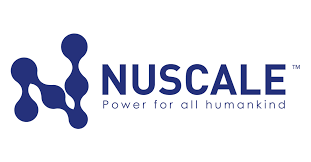Part 1 of 2 Parts
The U.S. plans to expand its nuclear industry face big funding and regulatory challenges. These problems could delay a new generation of smaller, more efficient reactors supported by advocates as critical to fighting climate change. A sharp fall in market support for start-ups developing small modular reactors (SMRs) and other advanced nuclear facilities threaten U.S. ambitions.
Last month NuScale Power Corporation abandoned plans to construct the first SMR in the U.S., despite receiving one and a half billion dollars in government cost-sharing pledges. They were not able to find enough power utilities who were interested in purchasing electricity from their facility in Idaho. Estimated power prices rose by over fifty percent in two years to eighty-nine dollars per megawatt hour.
Prior to NuScale problems, a one billion eight hundred million deal between X-energy and special purpose acquisition company (SPAC) Ares Acquisition. The deal was intended to enable the developer of nuclear technologies to go public.
Currently, the nuclear industry is waiting to find out whether Oklo, a nuclear start-up, can successfully go public via a blank-check company announced in July with AltC Acquisitions Corporation. The merger was proposed at a valuation of eight hundred and fifty million dollars. This would provide Oklo with five hundred million dollars to develop and commercialize its reactor design.
Marc Bianchi is an analyst at Cowen. He said, “There was already some investor aversion surrounding Spacs in general, and then you saw the first SMR cancelled, inflation causing a big increase in costs and X-energy’s deal fall through. So investors are certainly more skeptical. This would seem to raise the bar for future transactions.”
The nuclear industry is racing to design and develop SMRs which are advanced nuclear reactors that have a power capacity of three hundred megawatts or less. Conventional nuclear power reactors have three or more times the capacity. Government and private investors have spent billions of dollars to commercialize the technology in the past decade.
However, a combination of rising interest rates, inflation and concerns about the nuclear industry’s poor record of delivering projects on time and on budget have soured investor and customer sentiment towards the small but growing cluster of start-ups and other companies in the sector.
Shares in NuScale, which listed last year, lost almost a third of their value following the cancellation of its Idaho project. The shares are down by seventy percent this year. The problems at NuScale are spreading across the SMR sector.
X-energy is backed by chemical giant Dow. It was forced to lay off staff last month following its failure to conclude its merger. And the U.S. Defense Logistics Agency recently confirmed it had rescinded a notice of intent to award a contract to Oklo to provide power for an Alaskan air force base.
Clay Sell is the CEO of X-energy. He said that the problems at NuScale combined with macroeconomic factors and war in Ukraine and Gaze have had a chilling impact on its proposed merger. He went on to say, “When we announced our deal they [NuScale] were trading at a significant premium above their go public price and when we called off the transaction they were below $3. So there were certain realities about the market, which . . . put public equity providers in a risk-off situation.”
Despite these problems, Oklo said that it was confident that it could conclude its deal in the first quarter of 2024. Its reactors generate fifteen megawatts of electricity. They have significant advantages over existing technology, including being able to operate for ten years or more before they need to be refueled.
Please read Part 2 next
